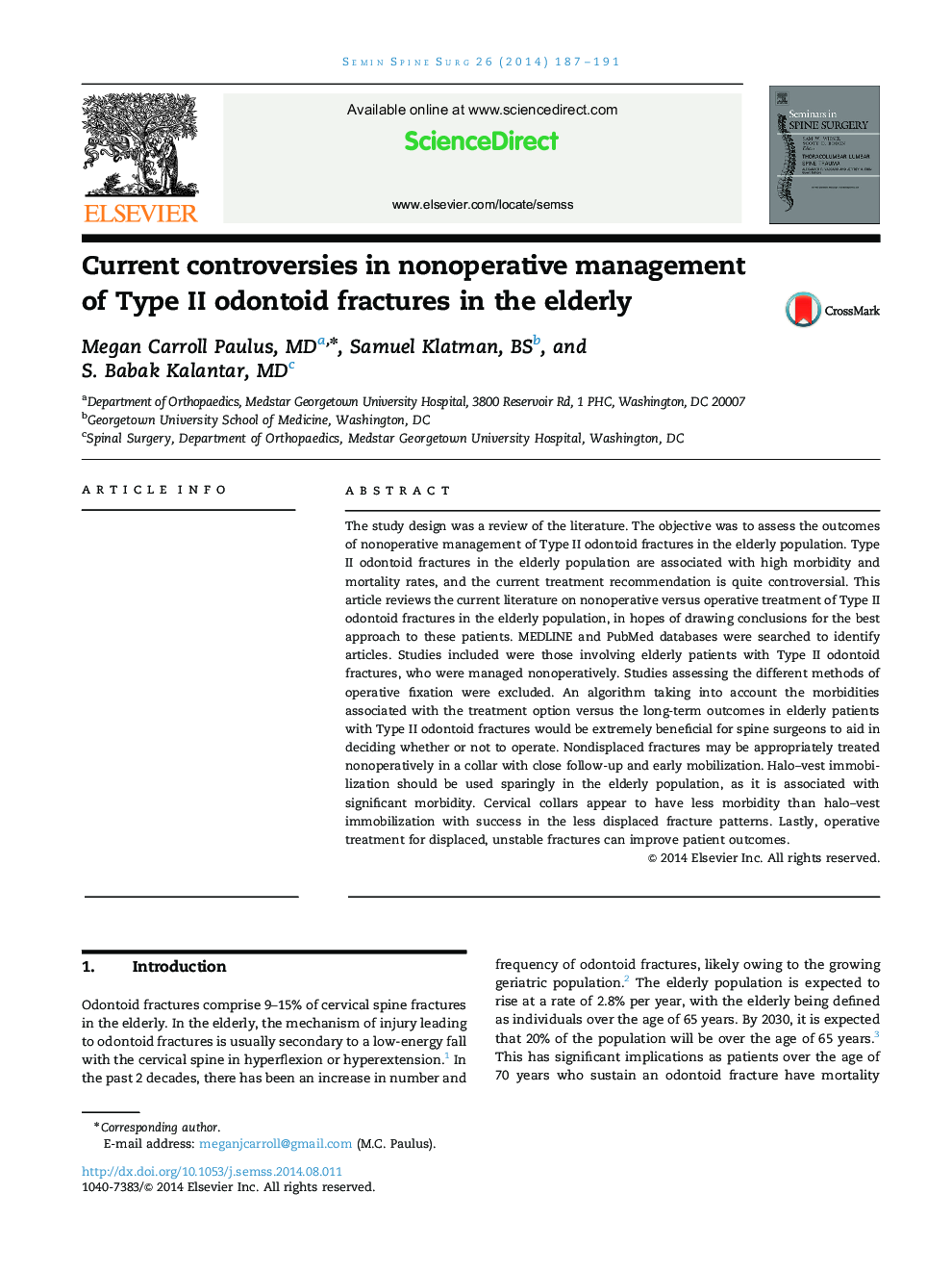| Article ID | Journal | Published Year | Pages | File Type |
|---|---|---|---|---|
| 4094619 | Seminars in Spine Surgery | 2014 | 5 Pages |
The study design was a review of the literature. The objective was to assess the outcomes of nonoperative management of Type II odontoid fractures in the elderly population. Type II odontoid fractures in the elderly population are associated with high morbidity and mortality rates, and the current treatment recommendation is quite controversial. This article reviews the current literature on nonoperative versus operative treatment of Type II odontoid fractures in the elderly population, in hopes of drawing conclusions for the best approach to these patients. MEDLINE and PubMed databases were searched to identify articles. Studies included were those involving elderly patients with Type II odontoid fractures, who were managed nonoperatively. Studies assessing the different methods of operative fixation were excluded. An algorithm taking into account the morbidities associated with the treatment option versus the long-term outcomes in elderly patients with Type II odontoid fractures would be extremely beneficial for spine surgeons to aid in deciding whether or not to operate. Nondisplaced fractures may be appropriately treated nonoperatively in a collar with close follow-up and early mobilization. Halo–vest immobilization should be used sparingly in the elderly population, as it is associated with significant morbidity. Cervical collars appear to have less morbidity than halo–vest immobilization with success in the less displaced fracture patterns. Lastly, operative treatment for displaced, unstable fractures can improve patient outcomes.
